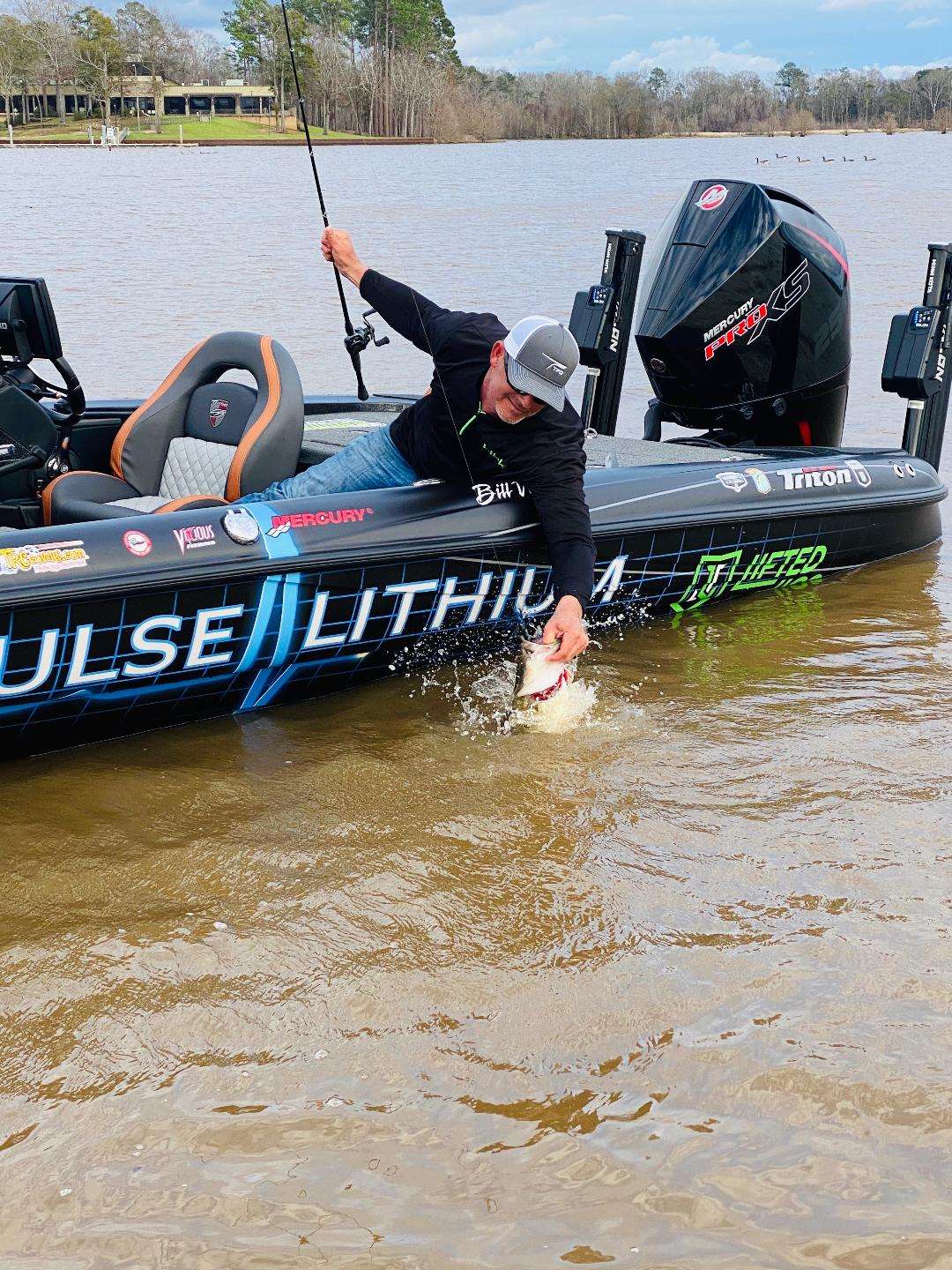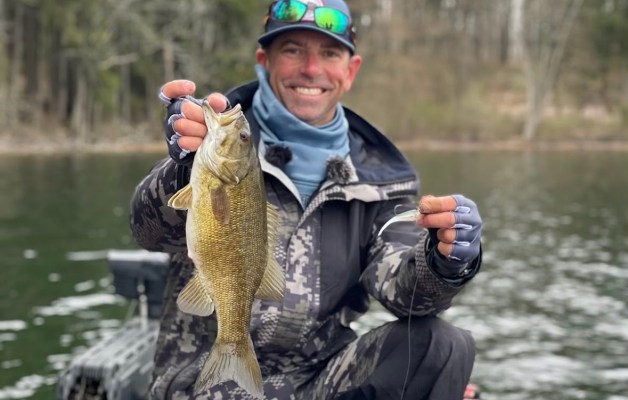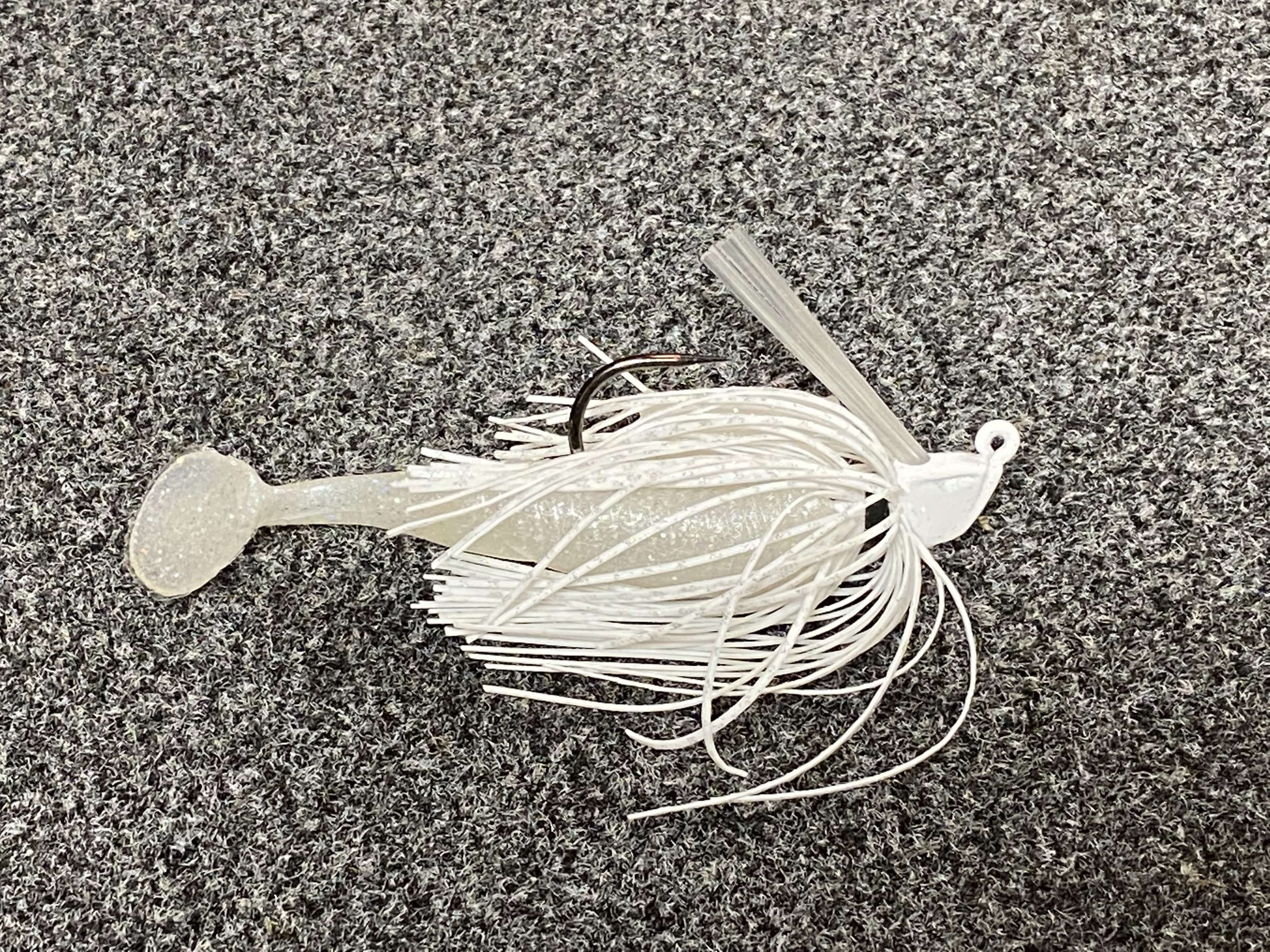
This is, no doubt, the age of the bladed jig, but while Alabama’s Bill Weidler respects its value, he’s a big fan of the swim jig’s skill sets. Think football: It’s all about handing the ball to the right guy.
If a bladed jig is the flashy, fleet-footed tailback, the swim jig is your fullback. Both are capable of running through the line of scrimmage, but the latter does much better at banging through crowded spaces.
“First and foremost, a swim jig is actually much better when you’re dealing with thick vegetation,” Weidler said. “You can run a bladed jig through hydrilla, as long as you’re not in the thick of it. But in terms of shallow, matted bank-type grass, the swim jig — with a weed guard and no blade to get caught on anything — you can take it across the tops of mats, and you can swim it on the very edge in the very thickest of the grass.”
Weidler said he finds this four-wheel-drive bait especially relevant during the postspawn period. For one thing, fry guarders often tuck the babies into grassy habitat, where a swim jig presents a threatening profile. Elsewhere, a properly presented swim jig makes a convincing panfish mimicry for spawned-out female bass that remain shallow to snack on bedding bluegill.
Weidler’s crystal clear about his swim jig preference: “The year I qualified for the Elites, I won 90 grand on it. I rely of this bait pretty heavily.
“If I can find where the fish are holding, I have enough confidence in that bait that it will catch ‘em. Every event that I go to, I have several swim jig rods on my deck. I can swim that jig down riprap or through timber.”
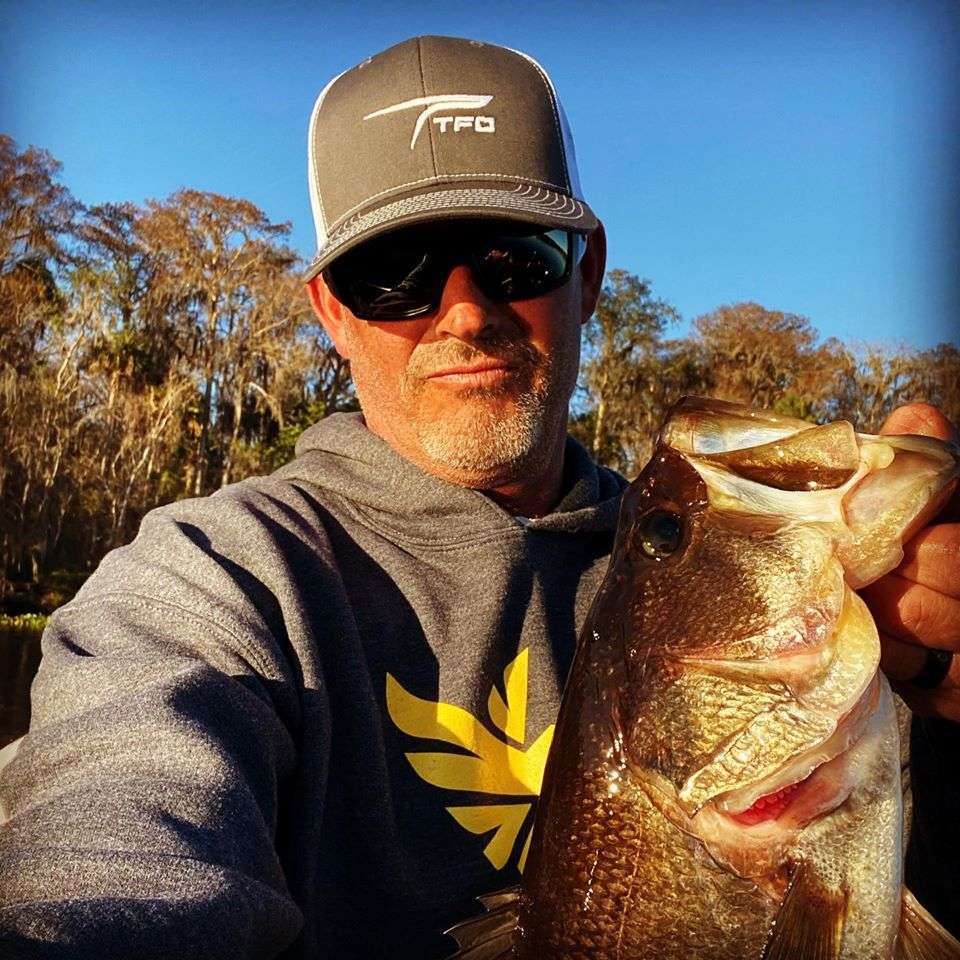
Call the plays
It’s worth noting that Weidler appreciates the bladed jig’s bite-triggering vibration, but when cover prohibits effective presentations, he has a work-around.
“I like the bladed jig, but depending on the trailer you use and how you work a swim jig, you can make that bait emit enough vibrations to trigger a strike,” he said.
For example, for prespawn and unseen spawning fish, he’ll often fit his Lifted Jigs SLX Swim Jig with a Reaction Innovations Spicy Beaver or a Zoom Super Speed Craw, both of which sport a set of broad pinchers that move a lot of water and create big-time vibrations that tempt aggressive fish.
Other options
Postspawn: When the spawned-out females start regaining their figures by gorging on shad spawns, Weidler tones down his presentations by switching to a 3 1/2-inch Zoom Z Craw Jr. A little cosmetic adjustment also helps his cause.
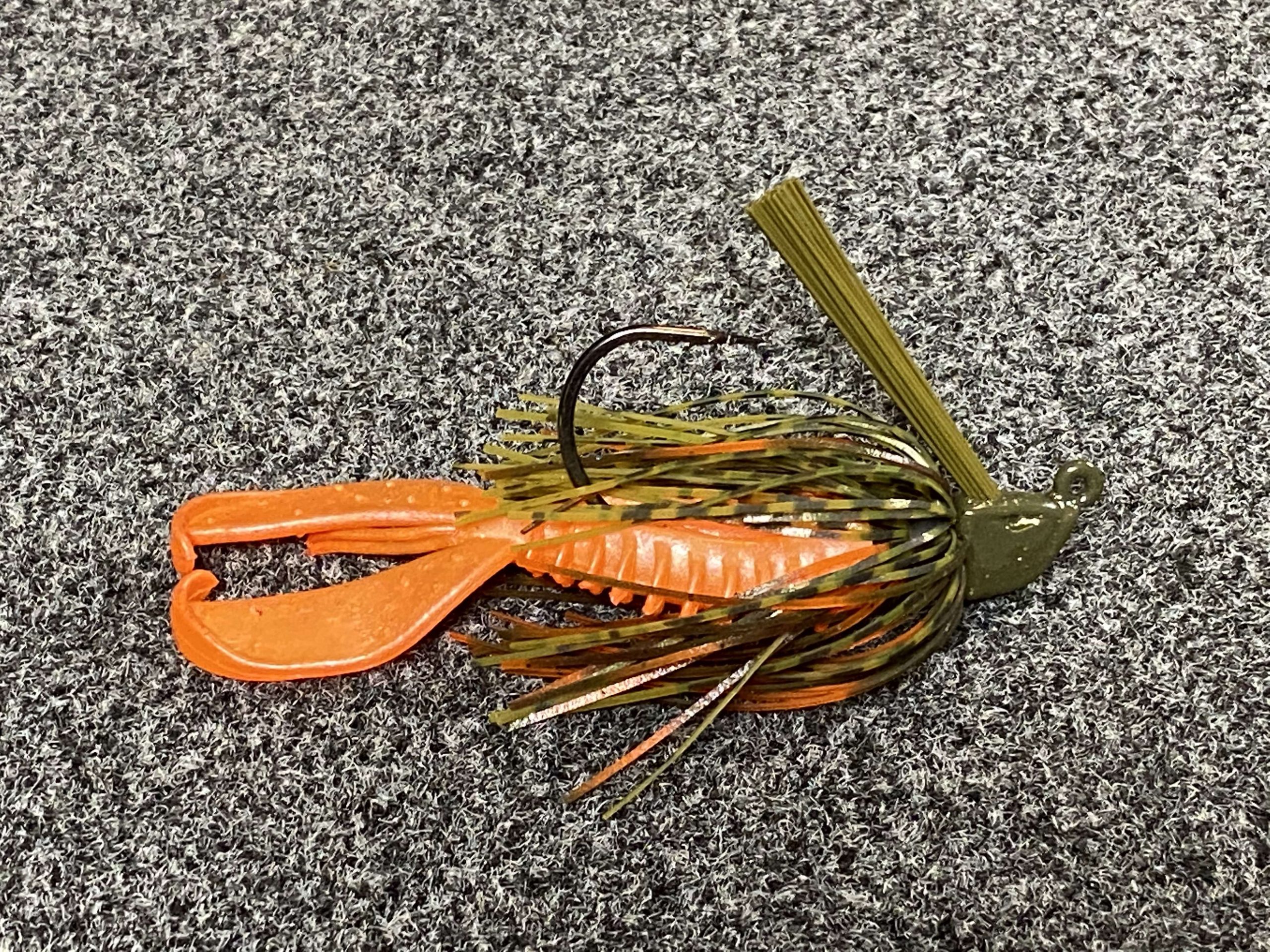
“When I use a trailer with slighter vibrations, I change the profile of the bait by trimming the skirt to the bottom off the hook, so everything is more compact,” he said. “I can move the bait a little bit quicker because there’s less drag.
“As the water warms, the fish get more aggressive and moving it quicker through the water column helps to trigger more strikes.”
Weidler said he often finds postspawn fish so aggressive, he actually wakes his swim jig across the surface. High rod posture, faster reeling — this is a good bet for those times when meteorological influences find the fish with a pep in their step.
“When we move into prefrontal conditions, where you have some overcast and breeze, I will always wake that bait, and it just seems to trigger the bigger bites,” Weidler said. “Also, whenever there’s a breeze blowing into the vegetation, I will almost always wake the bait.
“I’ll get on the windblown bank where the current is pushing the bait into the cover and wake that bait across the edge of the vegetation. Also, if I’m fishing over a mat, when I get to the edge, I’ll keep the bait up top and wake it.”
Summertime: When he’s looking for fish in eel grass or hydrilla in 6-8 feet, Weidler’s going to increase his swim jig weight from his standard 3/8-ounce size to 1/2- to 3/4-ounce and use a Reaction Innovations Skinny Dipper. This rig gives him options for tempting the fish cooling their heels in the grass.
“I find the fish tend to burrow in the (grass), so I’ll throw the swim jig out there, let it go to the bottom and then reel it in and tick the top of the grass,” he said. “I’ll use a steady retrieve and just let the paddle tail do the work.”
This scenario, Weidler said, clearly defines the swim jig’s heavy cover prowess.
“A bladed jig will have a tendency to grab a piece of eel grass or hydrilla, and it will get stuck in the blade,” he said. “A swim jig will just brush past the grass, and I’ll have minimal clearing of the bait.
“With a bladed jig, you can feel the blade stop vibrating and sometimes you can give it a good hard jerk to clear it. But with the swim jig, I can just pop it one time pretty easily and then I can just continue my retrieve.”
Tactical tips
Certainly, swim jig scenarios vary greatly, but Weidler offers a few takeaways to help you dial in your game.
Color: Dyeing trailer tips chartreuse, orange or red can mean the difference between a fish swirling at your bait or eating it. To this point, he always keeps multiple color options on his deck and gives fish ample opportunity to define the day’s preference.
Further, Weidler prefers a craw scented dye because followers are more likely to commit when they get a whiff of something they like. But back to the color thing; Weidler has found that extreme measures have often yielded big results.
“If we’re having a lot of rain and it’s muddy, I’ll always use a white or a bright color swim jig, but sometimes, I’ll take a white Z Craw Jr. or Spicy Beaver and dye the whole bait orange and put that on a bluegill color swim jig that has orange in it,” Weidler said. “That neon orange can produce some monster bites in muddy water. I’ve had some of my best bags on a combination like that.”
Line: For deeper presentations, Weidler fishes his swim jigs on 20-pound Vicious fluorocarbon on an 8:1 reel and a 7-2 heavy rod. Around shallow vegetation, he’ll only trust 65-pound braid for cutting through the salad and resisting nicks and rubs with stumps and laydowns.
“Some people say 65-pound braid is too heavy, but I’ve found that throughout a tournament day, even with 65-pound braid, the abrasion from the vegetation can weaken the line,” Weidler said. “I recommend retying every couple of hours.”
A properly employed swim jig could very possibly connect you with a personal best, so don’t blow the opportunity.
